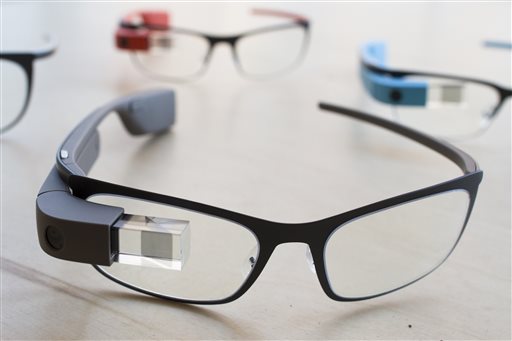Iterations of Google Glass have been around the military for decades in helmet head-up displays. But even ultra-geeky Scientific American eighteen months ago said that the device “is creepy.” With Google co-founder Sergey Brin recently arriving sans his normal Google Glasses at the 2nd Annual Breakthrough Prize Awards held last week at the NASA Ames Research Center in Mountain View, CA, the product’s biggest sponsor has moved on, according to Reuters.
Technologies that are the most avant-garde usually cause a big frenzy in the public. Autos were seen as dangerous to animals, and radio waves were rumored to be directed inside the public’s brains. But Google Glass was threatening on many levels, because it allowed the user to record digitally everything around him or her, and simultaneously engage in two or more public lives.
Google Glass is basically just a band across a user’s forehead with a miniature screen in the upper right hand corner. Tapping the earpiece and using vocal commands, the device operates like a smartphone app to find directions or highlight destinations.
The most common concern with “Glass” is that it is a distraction. Google Chairman Eric Schmidt was reported by TechCrunch as saying that talking to Google Glass out loud was the “the weirdest thing.”
Google tried to hype Glass as just like using a cell phone, except that you can just look up, instead of having to fish the phone out of your pocket. That supposedly also allow the user to snap pictures and videos, post things online and find friends in a crowd through face-recognition apps.
But with people using the device to read e-mail or watch movies, Glass is eventually going to be illegal for certain risky behavior like driving or operating machinery. YouTube has a number of funny (and some not-so-funny parodies about potential disasters with Glass.
Out of respect for the public, Google supposedly engineered the product so that a small “recording” light is outwardly illuminated. But Scientific American warned: “it’ll take about a day for someone to come up with a recording app that doesn’t activate the light.”
Glass was originally only available directly from Google for $1,500 in its limited invited “Explorers” program. At first, only Google employees and celebrities were allowed to wear Glass. But today anyone can go on the Internet and buy one from Google if the subject claims to be over 18 years old and a U.S. resident.
According to Reuters, three key Google Glass team employees have left, and 9 of the 16 independent Glass app makers they contacted admitted to dropping their Glass projects already. Reuters points out that “The Glass Collective,” a venture fund backing Glass apps, has abandoned Glass, and its webpage redirects inquiries to the Glass page.
A number of bars, restaurants and hotels prohibit Glass wearing for privacy reasons. Our lives may be constantly at risk of being recorded, but with Glass you would never know when someone close is violating your space by secretly filming. TechCrunch summed up the demise of “Glass”: techies refer to wearers as “Glassholes.”
Chriss Street suggests that if you are interested in California business and technology, please click on Virgin America IPO Goes Ballistic as Oil Prices Crash

COMMENTS
Please let us know if you're having issues with commenting.